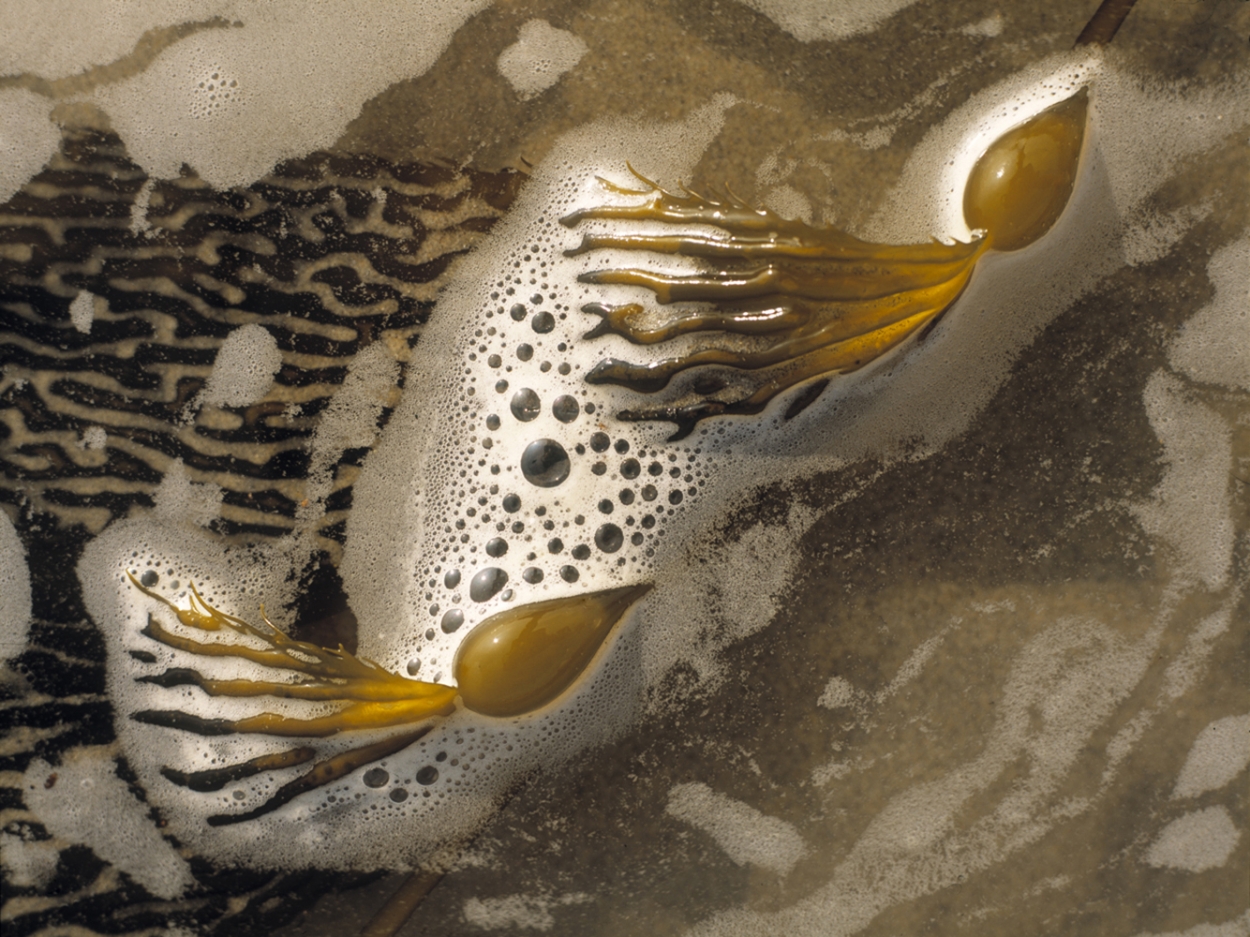micella : algal sequence
‘when, in the flux, the first bounding membrane
forms, like the memory-trace of a preceding state,
holds against current and tide its microcosm …’
(kathleen raine – water – p54, the year one – hamish hamilton, 1952)
‘ the tree of sub-atomic forces and designs turning in on themselves to form
atoms and molecules, patterns of atoms and molecules, aggregates of molecules,
patterns of aggregations and aggregations of patterns, always becoming
by some inevitable law, more and more complex, more and more ordered —
the brownian groping seeming aimless yet eventually leading to new order:
inorganic chemical action, crystalline structure, complex atoms and molecules,
building up into heavier atoms, and higher structures, the first micellae.’
(peter russell – visions and ruins – p20, saint albert’s press, 1964)
-

valonia ventricosa #1 (valley church bay, antigua, december 2019)
-

valonia ventricosa #2 (valley church bay, antigua, december 2019)
micella
project: micella – self organising, amphiphilic molecules forming a spherical colloidal aggregate
date: 2009
location: sandgate studio
valonia ventricosa images 1 and 2: valley church bay, antigua, December 2019 – a bubble algae that forms in tropical and subtropical seas
and is sighted as the largest single celled life-form on earth.
sea foam and kelp image: san clemente, california, 1981 – throughout the intertidal zone, concentrations of dissolved organic matter
such as proteins, lignins, and lipids act as surfactants that create long lasting spumes.
micella images 1.1 – 1.12
process: single plate oil photo-micrographs
location: sandgate studio
date: march 2009
micella images 2.1 – 2.6
process: triple plate surfactant photo-micrographs
location: sandgate studio
date: June 200
journal
‘natural systems arrange themselves so to reduce their energy content. amphiphilic lipids put into water orientate themselves and group together to form tiny spheres or vesicles. the resulting bilayer boundary separating inside from outside like the phospholipid molecules in cell membranes. this is due to the fact that amphiphilic molecules have a water loving end (hydrophilic) and a water fearing end (hydrophobic). this emergent, self-organising process can work in either direction according to the environmental need, water kept in or out. according to how saturated the liquid is, molecules can add themselves to the structure, growing the vesicle. they are also autocatalitic (acting as templates that trigger the formation of more vesicles) and can in the right conditions even divide’
(robert m. hazen – gen•e•sis – joseph henry press, 2005)
within the theories relating to the beginnings of life on our planet, micella represent the ‘vesicle first’ principle;
that abiotic conditions created the containers that supported the processes in which genetic life could develop.
for an entity to be distinguished from its surroundings requires a barrier, a membrane
in an aqueous environment a non-aqueous barrier is required
a membrane represents a discrete, potential transition from non-life, to life
life is then recognisable by its partial separation from its surroundings
a membrane is the pre-condition for all metabolism
evolution is the result of materials transferred through semi-permeable membranes
reference
harold j. morowitz – mayonnaise and the origin of life – 1985 – charles scribner’s sons
lynn margulis – the symbiotic planet – 1998 – weidenfeld & nicolson
harold J. morowitz – the emergence of everything – 2002 – oxford university press
robert m. hazen – gen•e•sis – 2005 – joseph henry press
fragment 3.4 – origin
in the watery void
the finest possible lamella
halts the chemical oneness
breaks the singularity
a separation of minute variation
an emergent transition
unfolds its primal bloom
and traces faintly
the first moment
of our existence
-

1.1
-

1.2
-

1.11
-

1.12
-

1.3
-

1.4
-

1.5
-

1.6
-

1.7
-

1.8
-

1.9
-

1.10
-

2.1
-

-

2.3
-

2.4
-

2.5
-

2.6
Algal Sequence
‘the ideal scientist can be said to think like a poet’
(edward o. wilson – biophilia – harvard university press, 1984)
project description: the collection of algae and the making of thin layer chromatographs
project status: in development
location one: point lobos, california
location two: church cove, the lizard, cornwall

sea foam (san clemente, california, 1981)

kelp strand (san clemente, california 2014)

kelp bulbs (lovers point, pacific grove, california 2014)



